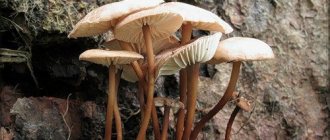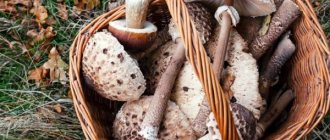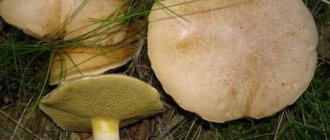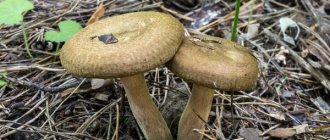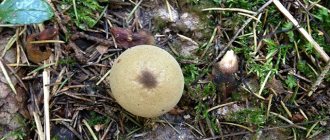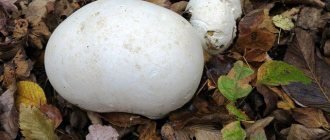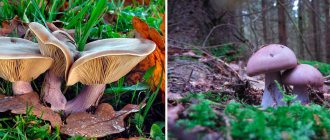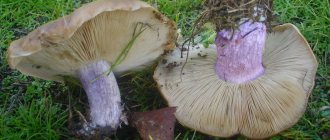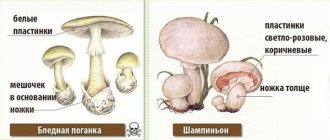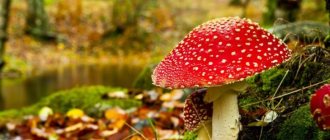The mushroom is inedible. The slime mold has a unique ability to move on the surface, which makes it different from other representatives of the kingdom. There are interesting unconfirmed hypotheses about the qualities of this specimen.
In this article we will analyze the positive and negative properties of a representative of the mushroom kingdom, consider the exotic appearance and analyze the unique way of life. The article contains interesting information about the theories and assumptions of scientists.
Another name for this creation of nature is myxomycete. It is classified as inedible. Previously, these organisms were called fungi-like, with the ability to move on surfaces. This is a unique feature.
Description
Myxomycetes have the appearance of a large viscous mass that reaches up to 12 cm in circumference. The specimen has certain structural features, which is why experts called such vegetative bodies “plasmodia” because they are a mass of plasma with a huge number of nuclei and no shells. The membrane is replaced by an outer layer of cytoplasm.
This specimen can be called truly strange. He is able to move, but at a low speed, occasionally exceeding 1 cm per hour. Slime mold has small plastic “legs” (pseudopods) - outgrowths of shells, thanks to which the creature of nature moves at a slow pace. This is a unique feature.
A natural creation can retract its legs and spread out on the surfaces of substrates to absorb liquid and benefit from being under the sun. Exposure to sunlight is extremely important as it helps remove excess fluid from the body.
If humidity and light levels are too low, the mushroom changes in an attempt to protect itself from the unfavorable environment. It tends to become covered with hard shells and stop moving until weather conditions return to normal.
The level of high humidity has a negative impact on the vital activity of the body of a natural creature: it can swell and stop moving towards water. In this case, he has a high chance of death. Excessive intake and accumulation of fluid in plasmodia can kill the slime mold. This is a unique feature.
Good lighting is the source of life for this organism. Myxomycete can die from slight temperature fluctuations. Thus, he is highly dependent on sunlight, which contributes to his ability to move, albeit very slowly.
Plasmodium slime mold can be microscopically small, or it can reach quite large sizes. Vegetative bodies, reaching tens of centimeters, usually consist of a huge number of individual plasmodia. They tend to “scatter” in different directions, and then come together in another place. Such forms are called “pseudoplasmodia”; they differ from the single-celled true plasmodia.
The slime mold is capable of forming a fruiting body covered with dense membranes. They contain spores underneath. But a parasitic species does not have such characteristics, because parasite spores can only form in the body and cells of the host. This is a unique feature.
Mushrooms are a cure!
But it turns out that mushrooms are the cure. In oncology of moderate severity and in the postoperative period, as well as after a course of chemotherapy and radiation, it is recommended to take agaric Brazilian, shiitake, reishi, and maitake mushrooms.
Their use inhibits tumor development and fights metastases and the consequences of taking chemicals and therapy.
In stage 4 cancer, mushrooms have a strengthening effect on the body and reduce pain. You just need to know that medicinal mushrooms are not sold in regular stores, as they are grown under special conditions.
Taxonomy
Slime molds are similar in description, because the vegetative body has strange uneven shapes and a characteristic viscosity. The main signs are movement skills and the absence of mycelium. The Slime Mold department contains several classes:
- The myxogaster class is free-living. Plant remains provide favorable conditions for the development of such organisms. They can settle on rotten stumps, leaf litter, and so on. They need a place rich in organic matter. Some species have enormous plasmodia sizes (can reach tens of cm).
- Protostelia is a free-living class that is found on dead wood, tree bark, soil, manure, and so on. The bulk have vegetative bodies of microscopic size, and only a few have multinucleate reticulate plasmodium.
- Plasmodiophoric class. This includes intracellular parasites that do not have special adaptations to reproduce. Spore formation occurs directly in host cells.
Systematic groups
Slime molds, or myxomycetes, according to the morphological analysis of spore-bearing structures, are divided into several classes:
- Myxomycetes (myxomycetes, or true slime molds);
- Dictyosteliomycetes (dictyosteliomycetes);
- Protosteliomycetes (protosteliomycetes)
These groups differ in structure, appearance and way of life. Only slime molds from the class Myxomycetes can move actively.
Each of these species has special properties, but even wild animals do not use them for their food.
Peculiarities
The analysis of the characteristics of this variety is still carried out by specialists. The species has a huge number of interesting secrets that scientists and mycologists have yet to unravel.
Positive
Detailed research on the qualities of this representative is very difficult to find on the Internet, because this topic is often touched upon only by scientists and specialists who study the properties of myxomycetes. But we already have information about some positive features:
- Some cultures use myxomycetes as a means to regenerate wounded skin and cuts. But despite this, there is no guarantee of the effectiveness of such a dubious method of treatment.
- Siberian shamans could often use the species for the purpose of rehabilitation after mild and severe skin diseases.
- The myxomycete is capable of converting a dead plant into a compound that other plants can feed on to carry out their life activities. This is a unique feature.
- A godsend for every nature photographer who has the opportunity to capture an exotic appearance.
Negative
The negative properties are serious. For example:
- The existence of a whole class of parasites that cause various diseases of agricultural crops (for example, some vegetables). Soil inhabitants, water and human activity spread parasite spores, which makes it extremely difficult to fight the organisms.
- There is an unconfirmed hypothesis that parasites may contribute to the onset of cancer.
Harm from slime molds
A number of representatives of the department are plant parasites, pathogens of many agricultural crops, causing, for example, clubroot and other cruciferous plants Plasmodiophora brassicae. The roots of a diseased plant are swollen and their total mass can be about half the total mass of the plant. If you cut the roots at an early stage of infection, then myxamoebas or plasmodia of slime mold may be visible in their cells. Another representative of the group, also of practical importance, is the causative agent of potato powdery scab - spongospora - Spongospora solani, which infects potato tubers, less often - stolons, tomatoes and other nightshade species.
Similar species
Myxomycete has many similar species, but we will analyze the most popular of them.
Licogala wood
Lycolaga fungus is called one of the types of mold that parasitizes dead rotting trees, old wood, and so on.
Licogal wood has fruiting bodies in the form of an irregular spherical shape, reaching up to 2 cm in diameter. At the initial stages of development, the fruiting body is distinguished by a light pinkish or red color. As it matures, it acquires dark brown shades. The surfaces of the fruiting bodies are covered with small scales. The internal cavities are filled with pinkish or red liquids. If you press on this part of the mushroom, you will notice a splash of liquid. This is a unique feature.
The slime mold licogala mushroom is not eaten and is classified as inedible. It is often confused with other specimens that have similar fruiting bodies. Can be found in forests in summer.
An interesting theory, about which scientists are still debating, is the following: there is a definite opinion that the formation of spores occurs in the ball of the specimen, which contain the seeds of a huge number of diseases. An instance can even take up residence in the human body. During a period of extreme heat, when the reserves of nutritional substances are depleted, the parasite senses approaching death, so all its remaining strength is spent on its offspring.
The parasite begins to crawl to sunny places and grow fruiting bodies that can be found on a stump or on wood. A ball is formed, which hardens, and the substance in it becomes thick. When it dries, it breaks down into spores. The fruiting body dies, and the spores give birth to new organisms. Thus, the lycogala mushroom has a unique feature.
Fuligo putrid
It is part of the Physaraceae family and the Fuligo genus. Classified as inedible.
Plasmodium is characterized by yellow hues, but can often be cream or white. The etalia can be described as cushion-shaped, solitary and characterized by different shades (yellow, white, purple, rusty orange). The largest individuals reach from 3 to 29 cm in diameter and up to 3 cm in thickness. Hypotallus can be multi-layered or single-layered, colorless or brownish.
The bulk of the spore powder has a dark brown tint. Spores are spherical, small, with small spines. Individuals spread on rotting plant debris.
Stemonitis axial
The individual has sporangia of light brown, light red-brown shades, cylindrical or pointed in shape, reaching a height of approximately 7 to 20 mm. They are located on shiny black legs, reaching a height of 6-7 mm. The specimens are collected into a group in bunches of medium and large sizes, which are located on common membrane-like hypothalli. This is a unique feature.
Spores tend to change color and become lighter during dispersal. The peridia can be described as thin, quickly disappearing. The bulk of the spore powder is red-brown in color. The presence of smooth and finely rough spores is characteristic. Plasmodium has white, light yellow, greenish or light green hues.
Lives on rotting stumps. It is extremely rare to find in herbs.
Tubifera rusty
Plasmodium lives in hard-to-reach damp places; they are colorless or have a slightly pinkish tint. Plasmodium is extremely difficult to observe, because they live in the crevices of fallen trees. The fruit body has a pinkish color. As it matures, it takes on a black or rusty hue. The specimen has special tubes that serve to release spores that can form new fruiting bodies. This is a unique feature.
This myxomycete is afraid of sun exposure, so it lives on a damp stump or snag. They are arranged closely, forming pseudoethalia, reaching up to 20 cm. From the side, pseudoethalia look like adjacent batteries of tubes, reaching from 4 to 8 mm in height and arranged vertically.
There are special holes created for the transport and passage of spores. The hole can open in the upper parts of the tube.
Young organisms have a bright crimson or red tint, but as they grow older they acquire gray, brown, rusty colors. This is where the name came from. The bulk of the spore powder has a dark brown tint.
Pseudoethalia are formed in early summer and complete maturation in October. Mosses, old roots and rotting tree trunks are the main habitats of Tubifera. There is an opinion among experts that there is a method of luring organisms to external visible surfaces.
When Tubifera is in bright red shades, it cannot be confused with other slime molds. It is difficult to name the exact period when the process of transformation from plasmodia into fruiting bodies similar to forest creatures began, and it is quite difficult to explain the reasons for the difference in size.
Diagnosis and treatment
It is difficult to diagnose slime mold because the symptoms of infection resemble other diseases and inflammatory processes. For diagnosis, a blood test is prescribed. A significant change in indicators may indicate the presence of a fungus. The method of vegetative resonance testing is also used. The study allows us to identify the lycogal fungus and accompanying viruses, and also determines the degree of their activity and location in the organs.
Treatment should only take place under the supervision of a physician. Potent antifungal agents are used internally, the dose of which is prescribed by a specialist. Medications that thin the mucus will be effective. Folk remedies are also used, but only after consultation with a doctor. It is recommended to eat and drink sour or salty foods, since licogala does not tolerate acidic environments. It is necessary to strengthen the immune system. Nutrition should be healthy and balanced, and you should get rid of bad habits. You can take immunomodulatory drugs.
Cultivation methods
Plasmodium is an organism that is related to fungi. It cannot be grown at home, as it requires a certain habitat. To carry out a normal life cycle, this representative of a huge kingdom requires favorable conditions in the form of certain air humidity, precipitation (substrate moisture), temperature and space for development.
Greenhouse conditions destroy the slime mold. You need special equipment for cultivation. A huge number of individuals were able to be recreated in the laboratory using nutrient media. Biochemical, biophysical, physiological, cytological and genetic studies are needed to study the valuable cycle of the parasite.
Routes of infection and symptoms of the presence of slime mold in the human body
Infection occurs aerogenously by inhaling dust with fungal spores.
At the end of its life cycle, the slime mold dries out and becomes covered with a hard brown shell. Spores form inside this shell. When the shell bursts, the spores fly out and become airborne. Infection with the fungus occurs through inhalation of spores. Once in the body, licogala begins active activity, bypassing all immune defenses. The fungus is especially dangerous for a weakened organism, which does not recognize the slime mold immediately, but gives an immune response after a while, when the parasite has already adapted. Licogala enters the blood and lymph, parasitizes the internal organs, maxillary sinuses, pelvic and respiratory organs, bladder, stomach and intestines. Sometimes infection can occur in utero, through the placenta from a sick mother. Signs of the disease look like this:
- general malaise;
- local pain (depending on the settling of the fungus);
- temperature increase;
- development of pneumonia or bronchitis (if licogal enters the respiratory tract);
- indigestion (if the fungus is localized in the gastrointestinal tract);
- disorders of the genitourinary system (if the slime mold gets into the bladder);
- the occurrence of cancer (provided that there are oncogenic viruses in the human body);
- the appearance of papillomas and cysts.
